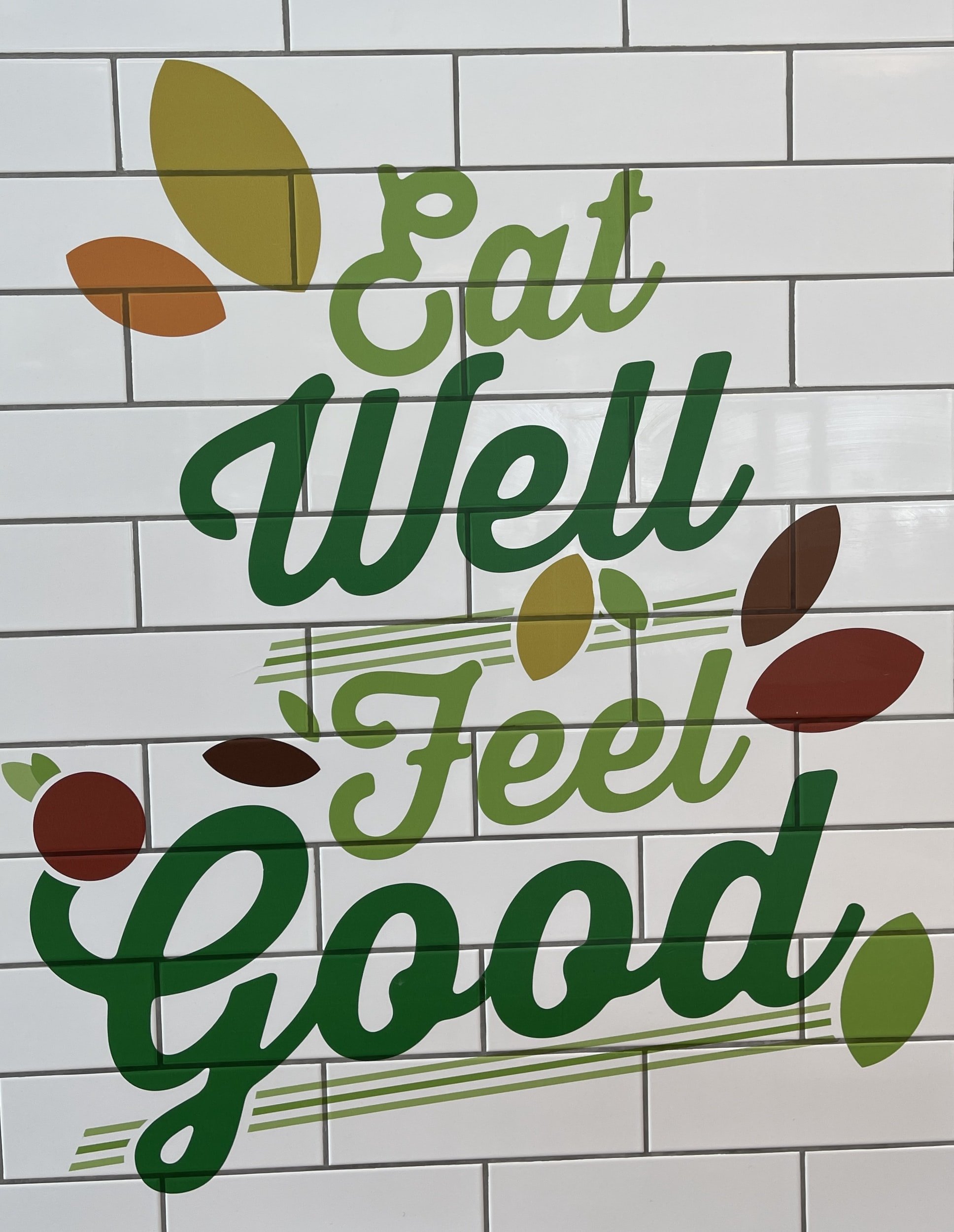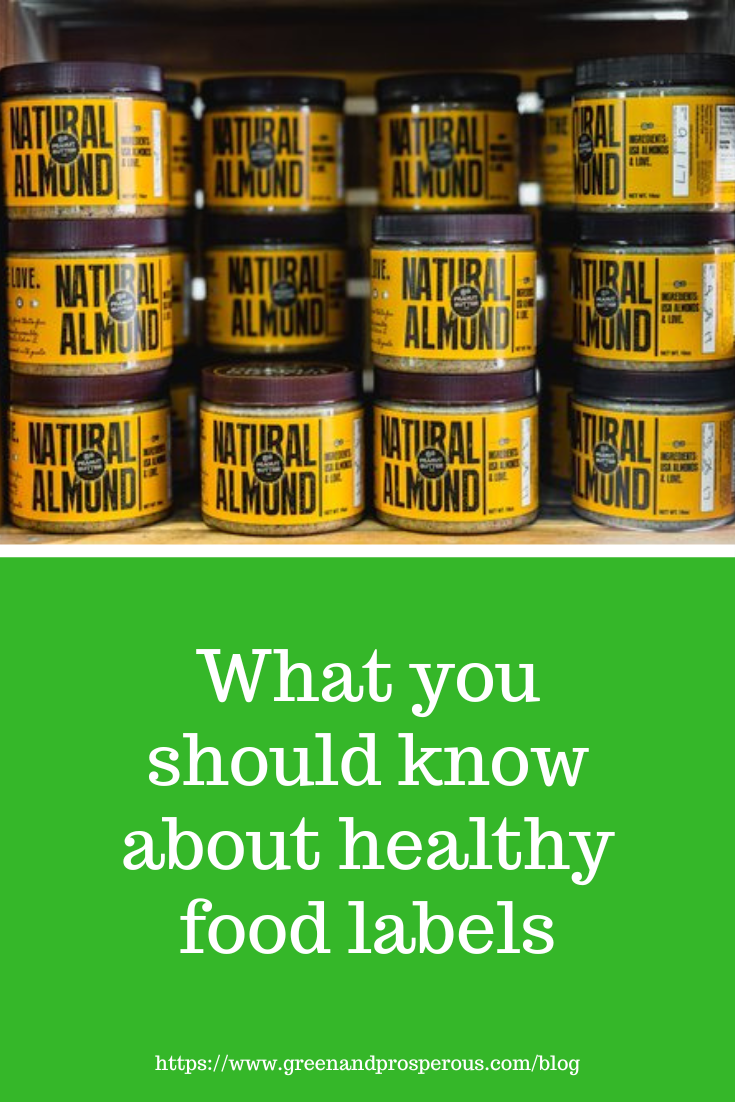What you should know about healthy food labels
/Healthy eating is something we all strive to achieve, and a healthy diet can not only improve your quality of life, it can prevent you from developing serious illnesses in middle age and later. We eat well when we choose foods that are nutritious and low in calories. When it comes to choosing food products, however, it’s difficult to tell which ones contain healthier ingredients.
In fact, some manufacturers may engage in a kind of greenwashing; that is, they label their products with misleading nutrition information that makes you think the product is healthier than it really is.
It's important to remember that there is a difference between the advertising content on a product's container (usually located on the front) and the ingredient list (usually located on the back). Advertising content is designed to appeal to your senses or emotions. It often contains feel-good statements aimed to get you to buy the product. The ingredient list, however, is where you should look to get a more accurate picture of whether or not the product you are looking to buy lives up to the health claims it is making.
How can you evaluate healthy food claims?
How much nutrition information do you really need to read before buying groceries? The answer depends on where you live, but some countries require more details than others.
You might know that in the United States, the U.S. Food and Drug Administration (FDA) requires manufacturers to include nutrition facts on their packaging. This means consumers have access to detailed information such as calories, fat, sodium, sugar, cholesterol, dietary fiber, protein, vitamins, minerals, and other nutrients. Other countries require this information, too, but some may allow manufacturers to simply list some ingredients in a general way on their labels (i.e. "spices" or "anti-caking agents").
Does reading the label mean you'll eat healthier? Not necessarily. In fact, some studies show that reading nutrition labels may make people less likely to make healthy food choices.
The problem is that most people are not trained in how to read ingredient labels or understand nutrition facts. Many also have no idea what a single serving size really looks like, so can't tell if a product contains an excessive amount of an ingredient like sugar or sodium.
Sugar is often added to foods because it helps them taste better or adds texture. In addition to being addictive, sugar can cause tooth decay, diabetes, obesity, heart disease, and other serious conditions. The American Heart Association recommends limiting daily intake to no more than 25 grams (about 6 teaspoons) per day to maintain optimal heart health. While some foods naturally contain high amounts of sugar, many processed foods add sugar during manufacturing. This processed sugar hits your bloodstream more quickly and can cause health problems such as diabetes or cardiovascular disease when you consume it on a regular basis.
Understanding nutrition facts labels
Although there are some challenges associated with understanding nutrition facts labels, reading them really is the best way to begin to make healthier choices when you are buying food. Wherever possible, you should choose low-sugar, low--sodium options and ignore the advertising copy on the front of the package.
Here are some additional things you should look out for to make sure you're not being misled:
1. “Reduced Sodium” Claims
Many processed foods claim to have low sodium, but these claims aren’t necessarily accurate or helpful. Foods labeled low sodium may have up to 140 mg per serving. Foods with the label "reduced sodium" are required to contain 25% less sodium than the regular version of that product.
Above all it is important to pay attention to the serving size. How many total servings are in the food package? Would you be consuming 1 serving, 2 servings, or more at a time?
The World Health Organization recommends that adults consume less than 5 grams (5000 mg) of sodium daily - a little over 2 teaspoons of table salt! The U.S. FDA recommends an even lower amount - 2300 mg per day. The recommended amount for kids under 15 is even lower. Moreover, if one low-sodium or reduced-sodium food is only a small part of your meal, you could be consuming more than half the U.S. FDA recommended daily amount in a single sitting.
2. Labels With No Nutrition Information
Some packaged foods simply state “no nutritional info” on their packaging. However, this doesn’t mean that the product contains zero nutrients. In the U.S., foods that contain very small amounts of the nutrients that are required in the declaration of nutrition facts do not have to have a nutrition label. Very small amounts are those amounts in which all ingredients round to zero or less than 1 gram.
The FDA has updated its list of nutrients required to appear on the product nutritional information label, but not all manufacturers are in compliance yet. This means that some products that currently state "no nutritional information" on their labels may still have a lot of hidden sugar, fat, and sodium.
3. All Natural
Some products claim to be "natural" or "all natural." But what does this really mean? These terms are misleading because they have no real meaning and may be leading consumers to think they mean things that they don't really mean. For example, many people believe that "natural" means that a product contains no artificial ingredients, no pesticides, or no GMOs. This, however, is often not the case.
The terms "natural" and "all natural" are not regulated by the FDA, and the USDA has no official definition for these terms. This means that manufacturers can use the label to mean any number of things. For example, the label "natural" can signal that the manufacturer has used some ingredients in the product that were in their original state when added to the product. For example, a container of fruit in syrup contains pieces of fruit (hence the "natural" claim) but that fruit has been genetically modified and the syrup contains artificial preservatives made from industrial chemicals.
4. Low Sugar
Low sugar generally means less than 10 grams of sugar per serving. The FDA has set limits for added sugars, which include all sweeteners other than those naturally occurring in foods such as honey, maple syrup, molasses, and agave nectar. These natural sweeteners do not count towards the total amount of sugar in a product.
However, products that claim to be low in sugar may indeed contain low amount of natural sugars while also containing high amounts of added sugars. Many companies add sugars to sweeten their products, but there’s no need to use them If a product says it's "low sugar," check the ingredient list to see if any added sugar was used as a sweetener. You can also use the serving sizes to see if the products really contain less than 10 grams of sugar per serving.
Most processed foods contain high amounts of sugar or artificial sweeteners. Artificial sweeteners like Splenda and Equal can make a product taste sweeter, but they also come with health risks. Many artificial sweeteners have been linked to cancer, diabetes, obesity, heart disease, and digestive problems.
Sugar alcohols are another form of sugar found in processed foods. These are a class of polyols that include sorbitol (also known as xylitol), mannitol, and hydrogenated starch hydrolysates. Sugar alcohols have been used in the food industry for many years to replace sucrose or other carbohydrates in foods because they provide similar sweetness without contributing significantly to calories. They are made from natural sugars, but they don’t break down like table sugar does. As a result, they contribute to weight gain over time.
Other names for added sugars that you may encounter on ingredient lists include the following: dextrose, fructose, glucose, maltose, lactose, sucralose, high fructose corn syrup (HFCS), cane juice, beet sugar, brown sugar, honey, molasses, and agave nectar.
5. Hidden Ingredients
Finally, look out for ingredients that are not visible upon first glance of a food label. In other words, certain ingredients may be listed on the front of the package, but hidden behind the back panel. For example, a product may have corn syrup listed on its ingredient list, but the actual ingredient is high fructose corn syrup. High fructose corn syrup is sweeter than regular corn syrup, so it adds extra sweetness to the product.
There are other hidden ingredients in your food that you may not be aware of. For example, many kinds of bread contain bleaching agents: chemicals like benzoyl peroxide and chlorine, both of which have been banned in countries like the UK, and both of which have been linked to cancer. Other foods contain hormones (such as testosterone, used in some varieties of farmed fish), polychlorinated biphenyls (PCBs), which enter the food chain through industrial processes, and tartrazine (an artificial coloring derived from tar), which is found in children's food and drink items that are colored yellow, orange, or green.
Reading labels doesn’t have to be hard
It doesn't require a lot of knowledge to become more aware of how to learn some basic nutrition facts and spot false advertising in the supposedly healthy foods you purchase.
Like this? Please pin!
Although a growing number of food manufacturers are becoming aware of the public's desire for healthier food options, a growing market for healthy foods also means that unscrupulous producers can easily dupe consumers into purchasing products that offer deceptive health claims. In some cases, the healthy food you think you are buying may in fact be damaging your health and increasing your chances of developing ailments like chronic migraines, high blood pressure, diabetes, or heart disease.
Reading food labels isn't going to chance everyone's capacity to make healthy food choices when food shopping, but becoming familiar with some basic knowledge will enable you to make better choices for your health.
You may also be interested in










































Climate change is a pressing issue that affects us all, and it's no surprise that many of us are becoming more mindful of sustainability in our daily lives. At the same time, we want to ensure that the food we eat is healthy and nourishing for ourselves and our loved ones. But did you know that sustainability and good health go hand in hand?